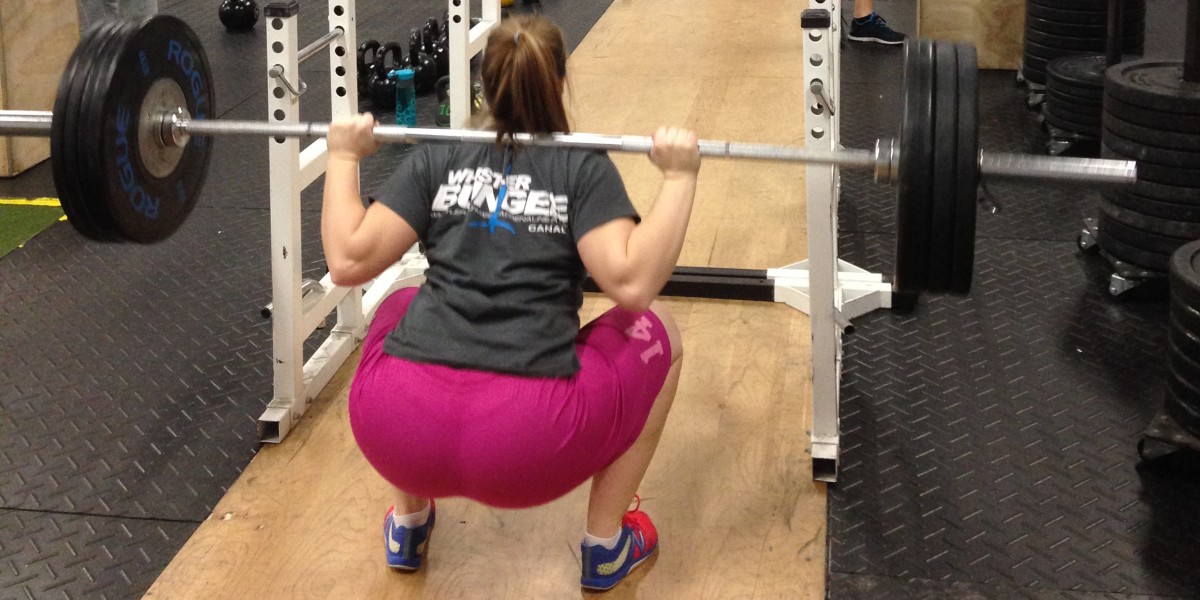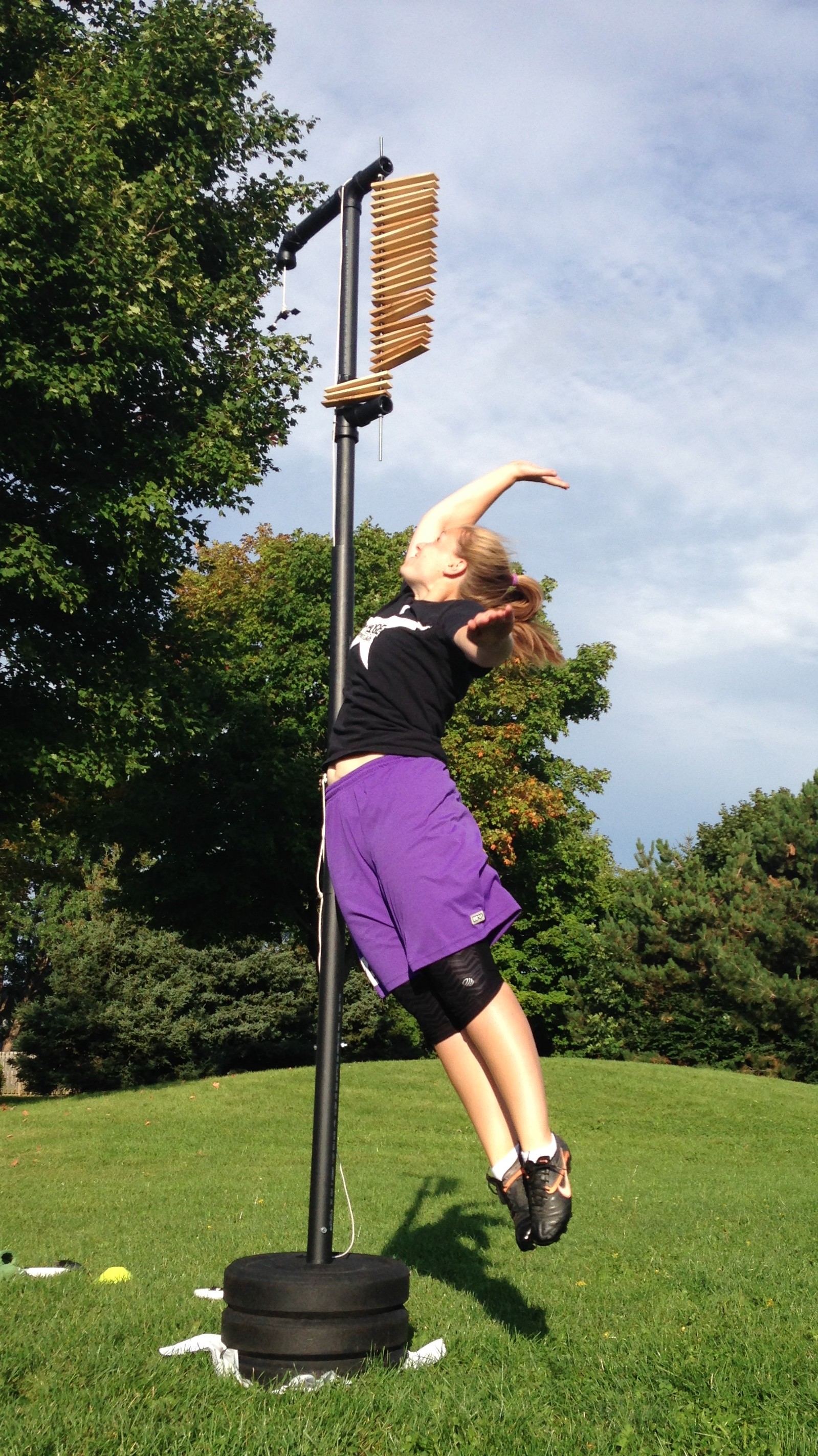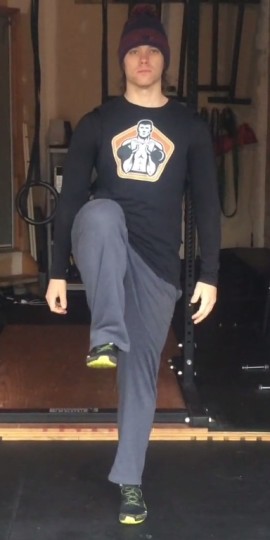 Brianna VanderGriendt in the weight room
Brianna VanderGriendt in the weight room
During my brief but exciting career as a strength and conditioning coach I taught weightlifting to soccer moms and hockey dads at CrossFit facilities, gave seminars to club teams on developing sprint mechanics, spent hours with varsity athletes honing sport-specific skills, and led wide-eyed freshmen trying to stave off those extra fifteen pounds through “cardio blast” and “super-sculpt” classes. In other words, I have observed a variety of individuals moving through space in the pursuit of fitness.
I have noticed a recurring trend across all levels, from the first time exerciser to the veteran athlete: an alarming lack of stability. Whether performing wall-assisted air squats for the first time or executing drills made routine through countless hours of practice, most people tend to rely on compensatory movement patterns that provide a less-than-ideal base for both performance and long-term health.
Athletes tend to default to non-optimal biomechanics due to a variety of factors, including prolonged periods of sitting and poor movement patterns. Correcting these faults should be the first focus of any off-season training regimen, as addressing poor mechanics pays dividends by keeping you healthier in the weight room and potentially decreasing the occurrence of repetitive strain injuries on the field. Stability issues often underlie typical (and atypical) injuries common to ultimate players and soccer moms alike.
This multi-part series will discuss training protocols designed to develop sport-specific stability. Parts one and two will examine pelvic and hip stability, while subsequent installments will delve into strategies for strengthening the trunk, also known as the midline. Concluding articles will discuss a series of compound movements that encourage proper posture and correct movement mechanics, and will also outline some strategies for future training.
Stability starts with the three gluteal muscles: the maximus, medius, and minimus–or, as they are colloquially known, the bum. Not only is your derrière responsible for propelling you to huge skys and massive layouts, it also stops you from falling over and plays a significant role in injury prevention. Studies have shown that ineffective gluteal activation likely leads to injuries, including low back pain (Nelson-Wong et al., 2012), anterior cruciate ligament sprains (Hewett et al., 2006), chronic ankle instability (Friel et al., 2006), and patellofemoral pain syndrome (Green 2005).
Understanding the importance of the gluteus muscles requires a brief physiology lesson on the pelvis, hip, and buttocks–as strength coaches everywhere commonly generalize: those hips. Hang out in a weight room long enough and you are bound to hear “get those hips back” or “open your hip!” You will also hear “knees out.” Obviously, “hips” and “knees” are important.
Or are they? What is your coach or that random person on the internet really saying when they yell at you to shove this or squeeze that? Hopefully the person shouting in truncated sentences knows that they are encouraging the initiation of movement through your gluteus maximus (hips back), keeping important musculature engaged in an effort to save joints and ligaments from shearing force. Why? Probably because: “Hey, externally rotate your thigh through a combination of glute musculature and hamstring engagement” is a bit of a mouthful.
However, external rotation of the thigh is essential to both training and injury prevention (Leetun DT et al., 2004). The gluteus maximus supports our torso when standing, propels us forward during a sprint, and launches us upwards during a jump, while the gluteus medius and minimus stabilize the pelvis and keep joints aligned properly when performing these actions. Unfortunately, these muscles are often woefully underdeveloped to the point that cueing of any sort becomes ineffective at best, and dangerous at worst.
Fortunately, there are numerous ways to test the health of your gluteal muscles. When working with an athlete, I like to begin by assessing range-of-motion limitations through static stretches. Not only does this practice allow me to view movement in a safe environment, passive stretching typically introduces athletes to the language of the body.
By placing someone in a stretch that targets their gluteus muscles, it becomes possible to ensure they are using the same muscle when performing more complex movements. Instead of simply cueing an athlete to use “those hips,” I am able to have a conversation regarding how an exercise felt. In turn, the athlete begins to develop a sense of their body, which improves their proprioception and simplifies the process of learning future exercises. Some useful static holds for the glutes are the pigeon stretch, the seated glute crossover, and the wall assisted piriformis stretch. Try them out for yourself:
- Begin in a push-up position.
- Sweep one leg up and adjust flexion and extension at the knee, ensuring a stretch in the gluteal musculature (the side of your bum) of the lead leg.
- If you do not feel the side of your bum, ensure that your hips are as square (forward-facing) as possible.
- Perform this stretch for two to four minutes, three times daily.
- Begin lying on your back.
- Place one leg against the wall with a bent knee.
- Place the other leg in a figure-four position.
- Gently put pressure on your knee until you feel a stretch in the back of your leg.
- Perform this stretch for two to four minutes, three times daily.
Trendelenburg Test Pass / Trendelenburg Test Fail
- From a standing position, lift one leg slowly and place it back to the ground.
- Shift your weight and slowly lift the opposite leg.
- Assess your performance versus the two sample videos; if you note that your hip dropped while lifting your leg (as in the positive video), re-test focusing on stability.
- A second positive is indicative of a lack of stability.
Hopefully those stretches and tests help build your own “gluteal understanding.” Don’t worry if they were challenging; mastering the pigeon stretch is a frustrating journey, and I fell over the first time I attempted the Trendelenburg test. Assuming there were some sticking points, I have good news and bad news.
Bad news first: gluteal weakness, which is what these tests and stretches assess, limits performance and is often indicative of potential injury (Presswood et all 2008). The good news: there are a few simple exercises that will help you get back on track. The next installment of this series will delve into a plethora of corrective exercises selected for their ability to correct movement patterns involving the gluteal muscles.













Comments Policy: At Skyd, we value all legitimate contributions to the discussion of ultimate. However, please ensure your input is respectful. Hateful, slanderous, or disrespectful comments will be deleted. For grammatical, factual, and typographic errors, instead of leaving a comment, please e-mail our editors directly at editors [at] skydmagazine.com.